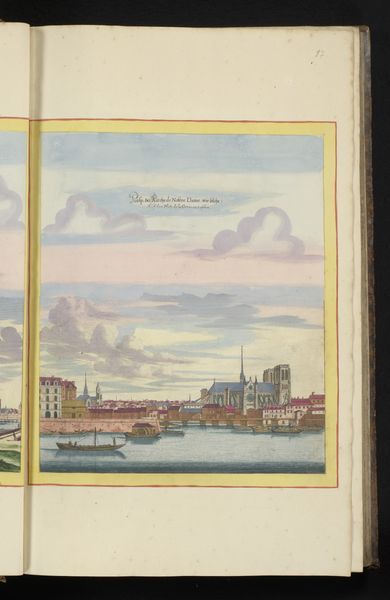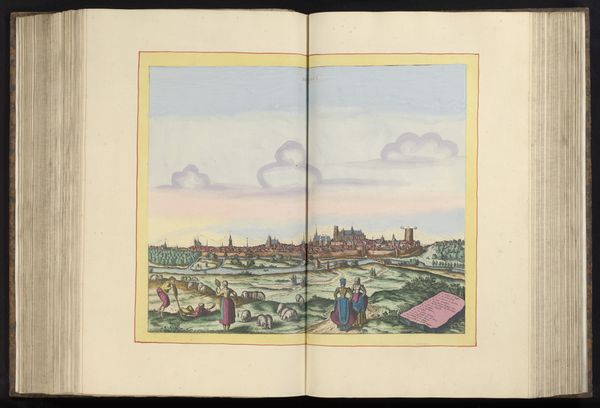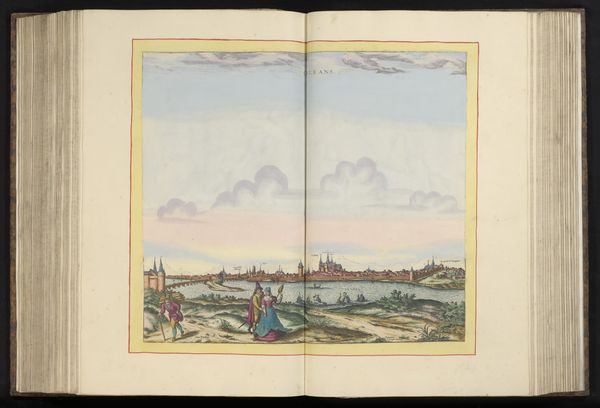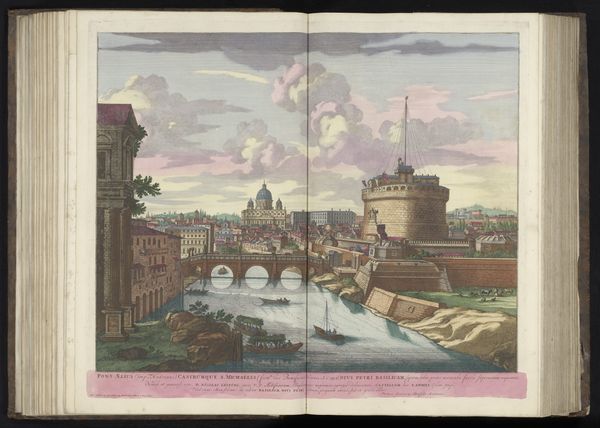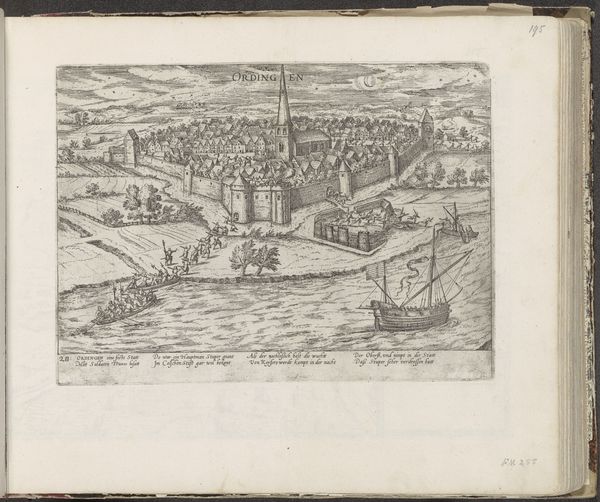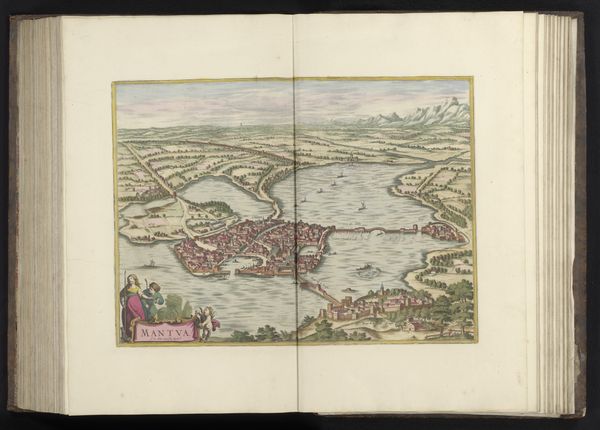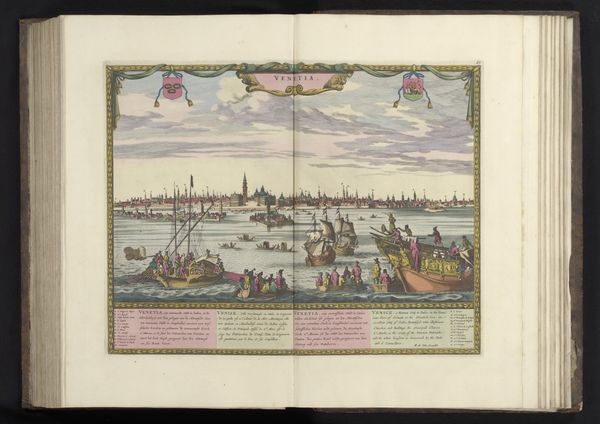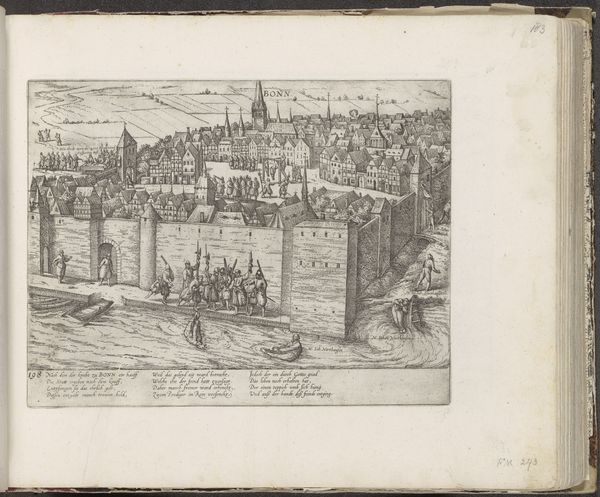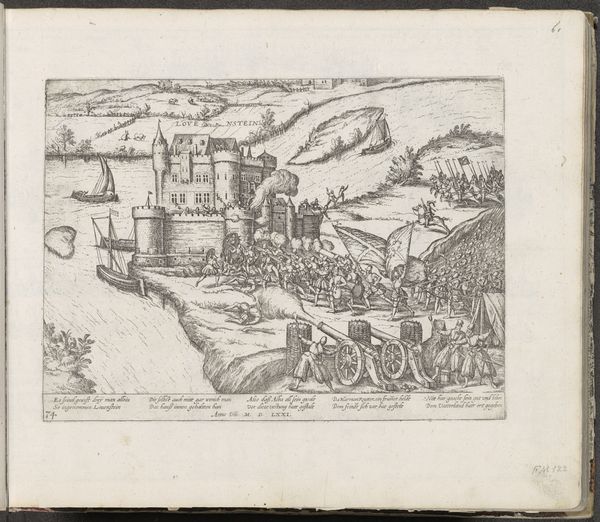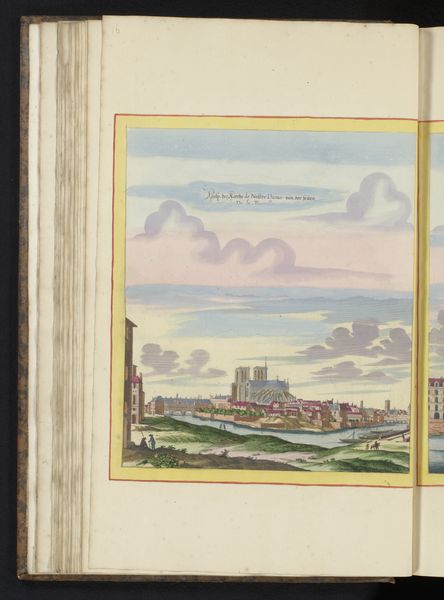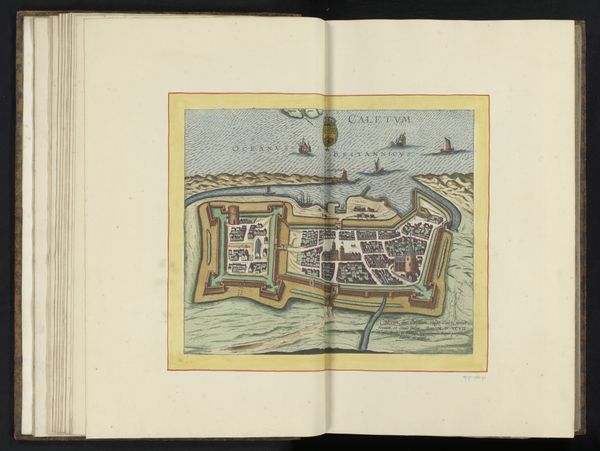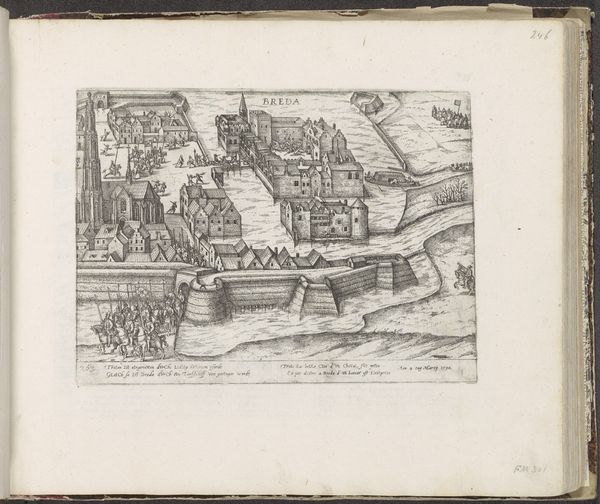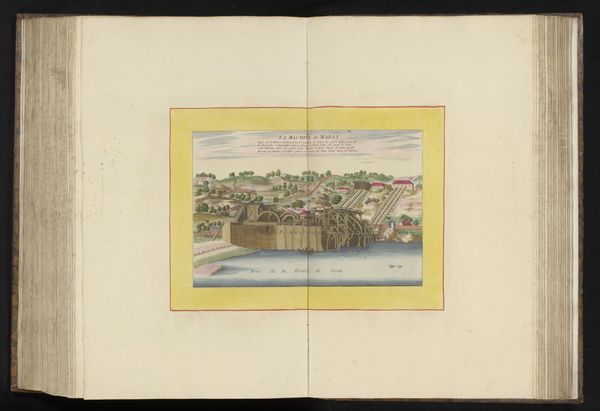
print, watercolor
#
baroque
# print
#
landscape
#
river
#
watercolor
#
coloured pencil
#
cityscape
#
italian-renaissance
#
watercolor
Dimensions: height 382 mm, width 517 mm
Copyright: Rijks Museum: Open Domain
Curator: Here we have "Engelenburcht, Sint-Pietersbasiliek en de rivier de Tiber," created sometime between 1695 and 1717 by Maffeus Urbanus de' Rossi. It’s a watercolor print portraying a vibrant cityscape. What strikes you first about it? Editor: Immediately, it’s the way the architecture dominates the landscape. The imposing Castel Sant’Angelo on the right is offset by the grandeur of St. Peter's Basilica in the background, framing the Tiber river as this dividing line between civic power and the church's spiritual influence. The people seem diminutive. Curator: Indeed. This view provides us with a meticulously constructed perspective on Rome, capturing both the monumental architecture and the flow of daily life along the Tiber. Consider that Maffeus Urbanus de' Rossi operated during a time when the Papal States wielded immense power; how might that have influenced this depiction? Editor: I think we have to see this piece within that political context. It’s not just a cityscape, it's an assertion of power, the church and state carefully presented as intertwined, almost inseparable elements. It evokes both civic pride and ecclesiastical authority, reflecting Rome's prominent position in the geopolitical landscape of the era. Curator: The printmaking technique allows for widespread distribution, which meant that such images were powerful tools in shaping perceptions of Rome, both for locals and visitors. It’s like early propaganda in some ways. Editor: Absolutely, but with aesthetic flair. Think about who this was for: the elites traveling through Europe. To showcase the divine magnificence, it also highlights existing hierarchies and class distinctions, doesn’t it? Look at those little boats on the river… who are they for? Curator: What's interesting is how the artist employs watercolor, usually a delicate medium, to depict such formidable structures. It adds a softness to what could otherwise be an intimidating scene. Editor: I find that softness misleading. The picturesque details are actually tools. It romanticizes an urban setting where the power structures would have oppressed and marginalized large portions of the population, effectively sanitizing the complicated reality. Curator: I see your point. But still, capturing this panorama gives us valuable insight into how Rome wanted to be perceived. Editor: Agreed. It reminds us that artistic representations, especially those depicting cityscapes, are rarely neutral. Curator: Thank you for shedding light on this piece. Thinking about its layered implications encourages us to critically engage with its enduring visual narrative. Editor: It encourages us to consider the past critically, in relationship to power, because really, that image reverberates even now.
Comments
No comments
Be the first to comment and join the conversation on the ultimate creative platform.
